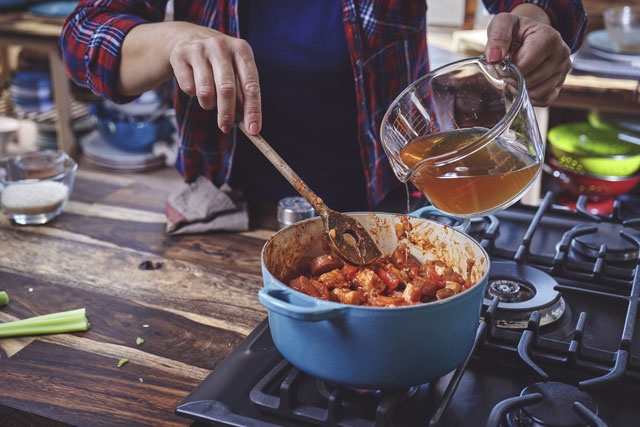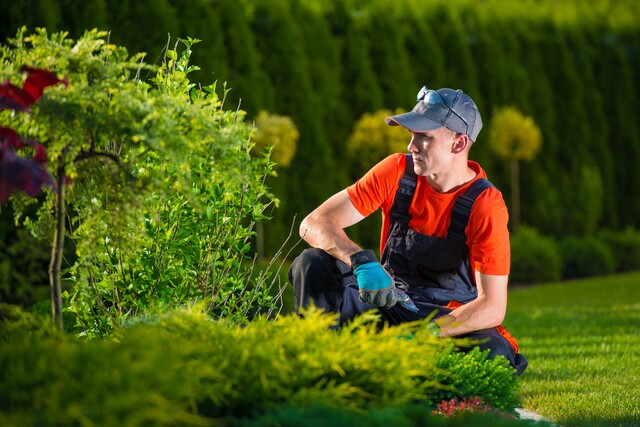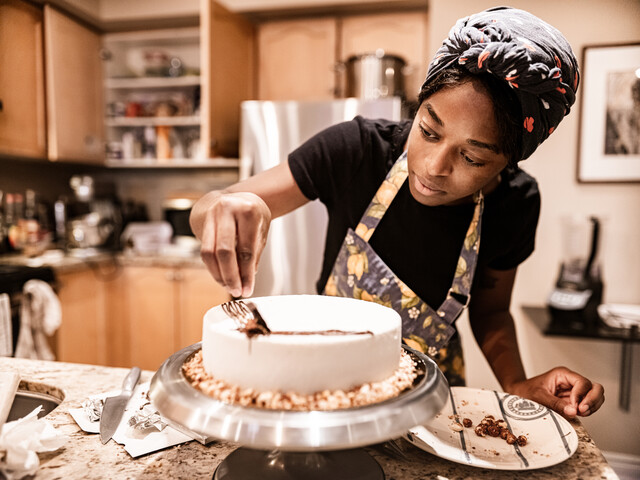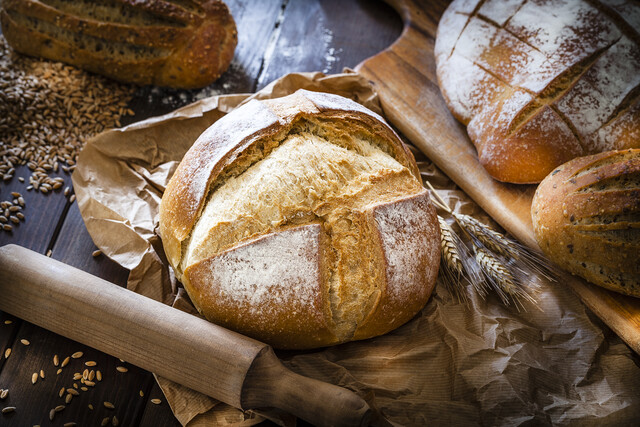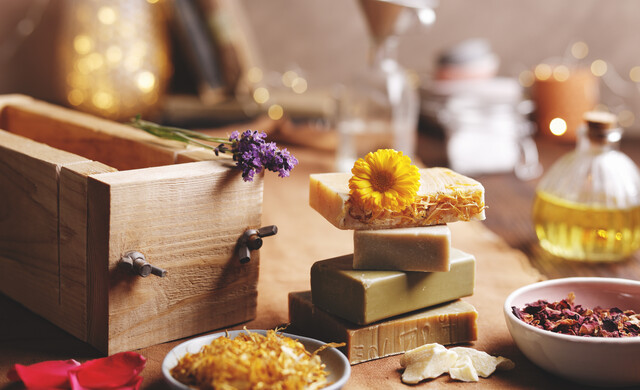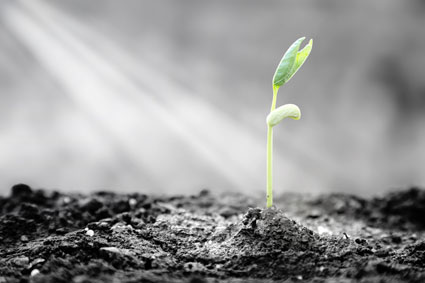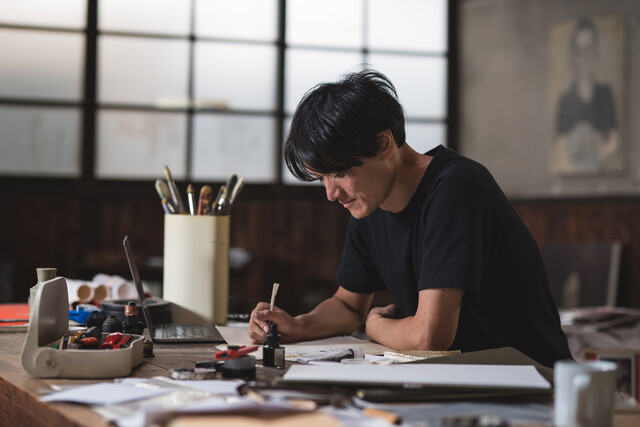Where to Get Flowers
Flowers are available just about everywhere! You can pick them up in the grocery store, at a floral shop, directly from a florist, and they are often in very, very good condition. However, if you are going to go into the floral arranging business, you may consider getting a wholesale license so that you can shop at your local wholesaler's warehouse.
They get shipments of flowers from all over the world, and if you are planning on creating floral arrangements for a large event, such as a wedding, you will want to have a good wholesale supplier on your side. They are a font of knowledge. They know when flowers are available and from where. Make good friends with your wholesale supplier. If there is any kind of problem with your expected order your supplier will be able to contact you, give you updates, anticipate any problems, and see if there is another source for something you need.
What to Look For
Before you buy flowers, make sure you know what you're looking for. It's actually a whole lot like buying produce; you look for firm, brightly colored plants. If your flowers are a little limp, if their leaves are limp, it's a good bet that your flowers are past their prime. It doesn't matter how well you care for them once you get them in your hands, once they're dying, that's about it. There are a few tricks of the trade, but for the most part, you want to work with the very freshest flowers you can find.
If you're just learning a bit about floral design and just want to practice your skills at home, then you will do just fine by asking your local grocery store or warehouse store (Costco or Sam's Club) when they get flower deliveries. You want to purchase flowers as soon after delivery as possible.
However, if you're thinking of going into the flower business, you will want to take the necessary step of becoming a business entity (that's a different course, naturally) so that you can purchase at a wholesale house.
Buying flowers from a wholesale house is a completely different experience than buying flowers at the grocery store. Wholesalers supply florists, your grocery store, and all independent floral designers in your area. Your very best friend will be your floral wholesaler. He or she will know what is available when (they have charts posted inside the warehouse), and they will also know if there has been a freeze, a flood somewhere in the world that will affect whether or not you can get green cymbidium, orchids in November.
Why is this important?
If you're becoming a floral designer, you will be expected to know when specific flowers are available, and about how much it will cost to get them.
Consider roses, as an example. Right now they cost, for premium long-stemmed roses, about $25 - $30 a bundle, which yields about 24 roses. During the Rose Bowl and during Valentine's Day, that price nearly doubles, especially for red roses. Even wholesalers have to pay that premium. If you base your prices on the "usual" cost and your client wants flowers during a premium season, you have to know this and add on a surcharge so that you don't end up paying for the privilege of creating their flower arrangements because you made a mistake!
Water/Food/Rehydrating/Storage
In order to have the very best floral arrangements, you need to have the very best quality flowers you can get. Treat them as if they are frozen goods, such as ice cream. You wouldn't leave ice cream in your car when the weather is a bit warm, and you shouldn't leave flowers in a warm car either. Make your flower stop your last stop before you go home or to your studio. As soon as you arrive at your destination, get the flowers out of the car and protect them from both heat and cold. No icy winds!
As quickly as you can, begin to prep your flowers. All of them are going to need to have their stems cut and to be placed in various tubs of water. Tubs can certainly be re-used, but it is always best to wash them well just before you put new flowers in them. You never know what diseases they may carry that could infect your next project.
As you prepare the tubs or buckets of water, make sure you add some flower food. Most of us recognize this as the flower food that we get at the store when we buy a small bouquet of flowers as a hostess gift.
For the professional floral designer, you can purchase large tubs of the floral food, putting about a tablespoon in each bucket with about a quart of water in the bottom. Yes, you feed them right away.
Some people believe that all you have to do is put a little sugar or Sprite and some bleach in the water and that works as well. Theoretically, this may work. The problem is that most people add way too much bleach and this will bleach the color out of your flowers! You don't want to add something that will turn your brightly colored blossoms into a faded shadow of themselves! Please, get the flower food. It really works so much better.
Get your flowers ready by opening up the wrapping. When you get your flowers from a wholesaler, especially if you have ordered specific amounts of flowers, they may come already packaged in bundles. Each supplier to your wholesaler packages their flowers a little differently. The packaging is designed to protect the flowers during their shipment period. Some flowers are shipped only one or two states away. Other flowers are shipped from halfway around the world. Remember this and treat them with kindness.
Here you see roses from Ecuador that are bundled and rolled in heavy plastic to protect both the blossoms and the stems. As soon as we get them to the studio, we chop off their ends because they have possibly been out of water for a period of time. When this happens the ends of the stems dry out. If you look closely at this picture, you will see how light-colored and dry the ends of these roses are. By cutting off the end you allow the flowers to drink.
Once the ends are dry, you either have to unblock them using a method we'll talk about later, or you chop off about an inch of their stems so that they can drink the water and flower food you put them into next.
Roses, especially, come with all their leaves. All but the top leaf cluster just underneath the bud need to be stripped from the stem. This allows most of the water to reach the flower, not the leaves. Be gentle with your flowers as you clean them. Do what must be done as quickly and as gently as possible so you don't damage them.
Just about all roses have thorns, which need to be removed. You can do this with your fingers (ouch!) , with a knife.
Or with a protective pad that you run down the stem of the rose, stripping both leaves and most of the thorns in one pass. Notice that green, flower-shaped pad.
All flowers need to be cleaned, their stems cut, and placed in buckets or vases of water with flower food. It doesn't matter if you're a home hobbyist or a floral designer preparing for a large wedding.
Treat your flowers properly to ensure that you have the very best results.
If you aren't going to be using the flowers right away, it is best to store them in a refrigerator at about 45F. When you visit a floral shop, you'll see most of their arrangements are kept in a refrigerated section. This helps to preserve the flowers for longer periods of time.
That way you can work on different parts of your floral plan for several days. When working on a wedding, most floral designers start a couple of days ahead by getting their flowers from the wholesaler, getting them back to the studio, immediately getting them into water as quickly as possible. Keep your flowers out of direct sunlight. And try to give them as much room as possible. Don't pack them tightly together. This allows them to relax as they're getting a drink.
Restoring Air-Blocked Roses
Sometimes roses come to you completely blocked. Here's a trick to help you get them resuscitated and drinking water again:
Remove thorns and foliage as we have already described. Cut approximately half an inch off the bottom of the stems. Make this a straight-across cut rather than an angled cut, which many who work with flowers use to increase the water uptake. Here we want the stems to be flat. Boil water, and pour about an inch and a half into the bottom of a heat-proof container. Plunge the blocked roses into the boiling water and leave them there for about five minutes. You'll see bubbles coming out of the bottoms of the roses. This shows that the blockage is opening. Remove the roses from water and put them into a cool water and floral food filled vase. These flowers should now be refrigerated at about 45F until you're ready to use them.
The flowers to the left before cleaning, the flowers to the right are cleaned, sorted and ready for arranging.
Cleaning Leaves, pollen, dirt/sorting
While roses are an excellent example of what needs to be done in terms of removing unnecessary leaves and thorns, all flowers need to be handled in much the same way. In this photo, you can see that while many of the leaves have been removed, those that were submerged while on display at the shop are beginning to rot. This is exactly why leaves that will be under water need to be removed. They will begin to rot, introduce bacteria at a faster rate as a result, and your whole arrangement will fade and die.
As you open each package of flowers, gently separate the stems and start the process of removing leaves, inspecting stems and buds, and chopping off at least an inch at the end of the stems before placing them into a bucket or vase of floral food and water.
As you are going through your flowers, pay some attention to the stems, leaves, and blossoms. In the case of roses, sometimes the outside petals are damaged. There's no reason to keep damaged petals. Removing one or two of the outside petals will only improve the look of the flower. I remove them as I see them, making it easy later to select exactly the right blossom for the right purpose.
Tip: Here's a tip of the trade. When you receive flowers, most of the blossoms are pretty tight and compact. This is excellent for some purposes, but at other times, you want the flowers to be more open. The lilies on the left are tightly shut. In order for them to open, they should be stored in a warm room. Roses can be stored in a warmer room too to encourage them to open more fully just prior to arranging them.
In the images below you will see what can happen to lilies when the another portion of the stamen is allowed to remain after the lily opens. These are covered with a sticky orange pollen that will stain the flower yellow. (They will stain a white shirt or bridal gown too!) No, you can't get this off. It will leave an unsightly stain. If you're working with a yellow or multi-colored arrangement, you can get away with it, but if you're looking for an "all-white" look as is a common request, you'll be dealing with dirty flowers and a big mess on your hands. As soon as the lilies open, remove these with your fingers. Then you'll have a beautiful white lily, which is what you want!
DID YOU KNOW: DAISIES
Daisies symbolize innocence.
Daisy is a "two in one" flower meaning you see the white petals peripherally and tiny yellow disc petals that form the eye.
The medicinal properties of daisies include relieving indigestion, easing of cough, slowing down bleeding, and easing back pain.
Daisies can become a serious weed problem if not controlled as they thrive in very rough conditions and are resistant to many bugs and pesticides.
Some daisies open their petals during the day but close them in evening when the sun sets giving them the name "day's eyes".


